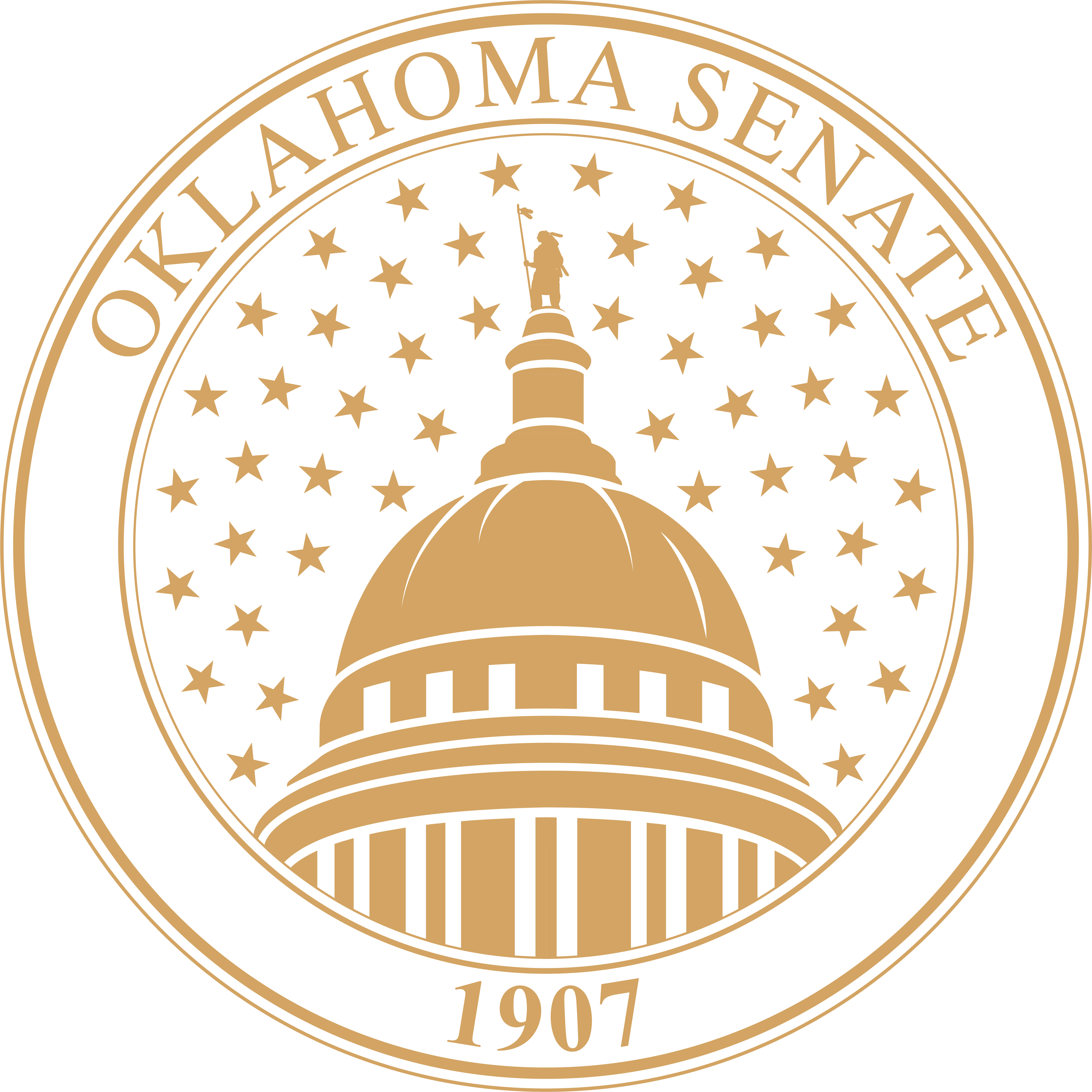
Senate History
Below are some important events that have shaped the Oklahoma Senate throughout the 100-plus years of it’s existence.
The Oklahoma Land Run begins.
Congress adopts the Oklahoma Organic Act.
The Sequoyah Convention begins. Many of Oklahoma's founding leaders participating in the Convention that sought to create a second state in Eastern Oklahoma.
Congress adopts OK Enabling Act, unifying the two territories into one state.
Oklahoma adopts its constitution and becomes the 46th state in the Union.
The 1st Legislature convenes.
Henry Johnston is elected as Oklahoma's 1st President Pro Tempore of the Senate.
Senate receives notice of the Governor's approval of HB 363 and HB 557, creating the foundation for the state's taxes.
SJR 8 is enrolled and referred to the people. The Join Resolution would refer to the people a motion to move the State Capitol, but did not decide on a location.
Governor Haskell calls a Special Session to decide on a location for the State Capitol.
Senate amends the location of the State Capitol proposed by the House and suggest the Capitol's current location on Lincoln Boulevard.
The House accepts the amendments and affirms the Senate's proposal to locate the Capitol on Lincoln Boulevard. Voters would later affirm the decision on June 11, 1910.
The groundwork begins on the State Capitol. In the meantime, legislative work is conducted in the Huckins Hotel in downtown Oklahoma City.
The cornerstone is laid by Solomon Layton, the architect of the Capitol.
The Legislature convenes in the unfinished State Capitol building.
The Capitol is opened to the public.
Hiram Powers and Helen Wood are wed in a ceremony taking place in the State Capitol, the first of many to follow.
Ms. Lamar Looney is the first woman ever elected to the Oklahoma State Senate.
The Senate receives articles of impeachment for Lieutenant Governor Trapp. The Senate adopts rules and proceedures for the Court of Impeachment for the first time.
The Senate receives articles of impeachment during a Special Session called by Governor Walton. The Senate duly suspends the Govenror pending the outcome of the trial.
Governor Walton is convicted and removed from office by the Senate.
The Senate receives articles of impeachment for Governor Johnston, but ultimately acquits the Governor of all charges.
The Senate receives articles of impeachment for Governor Johnston, this time on broader grounds of administrative incompetence, corruption, and election violations. The Senate refused to suspend the Govenror from office during his trial.
The Senate convicts the Governor on one charge of incompetence and removes him from office.
The Senate enters Session at the height of the Great Depression and on the eve of the inauguration of Governor Murray.
The Governor's measures, by Session's end, are largely defeated by an uncooperative Senate. The only measure to become law dealt with the creation of the Oklahoma Tax Commission.
The Balanced Budget Amendment to Oklahoma's Constitution is forwarded to the people for a vote.
The first African American State Senator, E. Melvin Porter, is elected.
The first Republican Governor, Henry Bellmon, is elected.
Justice Johnson is impeached by the House and removed the Senate following the revelation that he, and Justice Welch received several bribes in exchange for favorable rulings. Justice Welch resigned prior to the impeachment trial.
The Senate passes SJR6, a constitutional amendment to limit Legislative Sessions to 90 days and to meet on an annual basis.
The troubles surrounding the redistricting progress begin to recede after the federal government passed the Voting Rights Act, clarifying the parameters of future redistrcting processes.
The people approve SQ 435, previously known as SJR6, to limit Legislative Sessions to 90 days on an annual basis. Prior to this constitutional amendment, the Legislature met every two years.
Voters approve an initiative petition pushed by then Governor Bellmon to fix a firm deadline on sine die adjournment. The petition set the last Friday of May as the deadline for sine die adjournment.
Governor Bellmon calls a Special Session to pass legislation that would improve the state's public school system.
The Senate receives HB 1017, otherwise known as the Education Reform Act, and begins to debate the measure. The measure raised revenue from a variety of sources.
The Senate considers HB 1017 and, after vigourous debate and multiple amendments, passes the measure.
Capitol Dome construction begins.
The Capitol Dome is commemorated
A competitive election results in the first, and so far only, instance in Oklahoman history wherein the Senate was evenly split between the Democratic and Republican Parties. Republicans and Democrats agree to a power sharing framework wherein there would be two Pro Tempores, two Chairs for each committee, and two vice chairs
Republicans assume control of the Senate for the first time in its history. President Pro Tempore Glenn Coffee is elected to lead the body.
Senator Floyd is elected as minority leader for the Democratic Caucus of the Oklahoma State Senate. She is the first woman in to be elected to the position.
Senator Kim David is selected by President Pro Tempore Treat to be the Floor Leader of the Oklahoma State Senate. She is the first woman to be selected for the position.
 Oklahoma Senate
Oklahoma Senate

